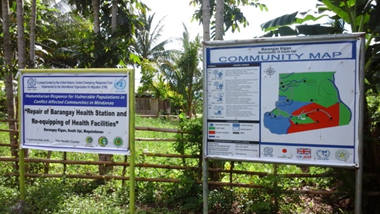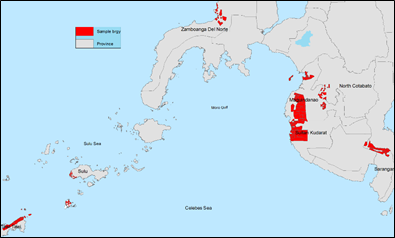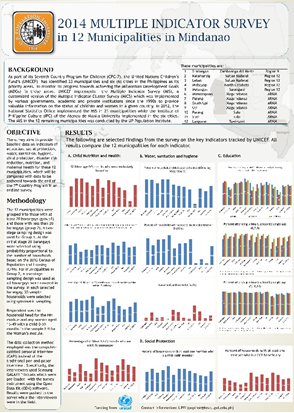
Part of the United Nations Children’s Fund’s (UNICEF) Seventh Country Program for Children (CPC-7) in the Philippines is the realization of the Millennium Development Goals (MDGs) through the improvement of various indicators on education, social security, water, sanitation, hygiene, child protection, disaster risk reduction, nutrition, and maternal health. Towards this goal, UNICEF has identified a total number of 30 municipalities and 6 cities across the country as priority areas for action.
To monitor country progress towards the MDGs, the UNICEF has instituted a regular monitoring mechanism called the Multiple Indicator Surveys (MIS), adopted from the Multiple Indicator Cluster Survey (MICS) in the 1990s. In 2012, the Philippine Statistics Authority (PSA) conducted the survey in 18 municipalities followed by the Ateneo de Manila University Institute of Philippine Culture in 6 cities in 2013, and finally by the UP Population Institute in 12 municipalities in Mindanao in 2014.
The UPPI MIS survey was conducted in the municipalities of Sindangan in Zamboanga del Norte, Kalamansig and Lebak in Sultan Kudarat, Midsayap in North Cotabato, Malungon in Sarangani, Mamasapano, Parang, South Upi, and Upi in Maguindanao, Parang and Siasi in Sulu, and Languyan in Tawi-tawi. The main goal of the study was to monitor the progress of these municipalities towards achieving the Millennium Development Goals (MDGs) through the collection of baseline information about the population living in the said areas in terms of access to and quality of basic services.

Map showing the UPPI MIS areas in red

Poster presented during the CSSP Week
Sampling depended on the number of barangays per municipality. Where it was 20 or more, a two-stage sampling design was used where 20 barangays were initially chosen with probability proportional to the number of households based on data from the 2010 Census of Population and Housing. Afterwards, 30 households were chosen per barangay using systematic sampling. For municipalities with less than 20 barangays, a one-stage sampling design was used where for all the barangays, 30 sample households were chosen using systematic sampling.
Three four-day training sessions were conducted for a total of 84 field workers in General Santos City, Cagayan de Oro City, and Zamboanga City successively from August to September 2014. For data collection, field interviewers used android tablets loaded with questionnaires developed using Open Data Kit (ODK) software. A total of 6,600 households were sampled in the survey with household and individual respondent response rates of 94% and 88% respectively.
Share
